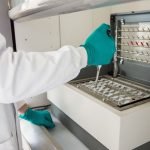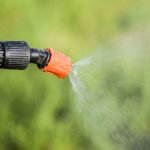An Introduction to The National Academy of Environmental Medicine
Association Spotlight
Lyn Patrick, ND
The mission of the Naturopathic Academy of Environmental Medicine (NAEM) is to advance the knowledge, science, application and availability of effective environmental medicine for all healthcare providers and the public alike.
The purpose of the NAEM is to disseminate knowledge and increase exposure to environmental medicine in the naturopathic and conventional medical communities. The founding board of directors consists of prominent physicians and leaders in the area of environmental medicine.
The following questions have come up with regard to the mission and function of the NAEM.
NAEM goals for the next three years
Our goals are to support environmental medicine as a specialty for NDs and other medical practitioners by providing continuing education from experts in the field as well as a community of practitioners that can make themselves available to patients who need this specialty.
I would like to see environmental medicine become a recognized part of the undergraduate training program in all naturopathic medical schools. Our Board of Directors, two of whom are faculty members at Bastyr University and Bastyr San Diego, are working to ensure that we have a complete survey of current environmental medicine curricula at the accredited naturopathic medical schools. We are also working to establish post-graduate educational opportunities through our online webinars and at the annual Environmental Health Symposium conference (EHS 2017), to offer a range of continuing education at basic and advanced levels and increase awareness and knowledge around both problems and solutions in environmental medicine.
Current Projects
Our Board of Directors is currently providing continuing education webinars as a free benefit to members. We have approximately 20 hours of Continuing Education credits available through our website. We are also working with the American Academy of Environmental Medicine to a co-develop a Board Certification examination. Fellowship in the AAEM is available to NDs but the NAEM would like to make that certification specific for the therapeutic interventions naturopathic physicians utilize.
Obstacles and Challenges
Corporate partnerships are becoming more challenging as more specialty organizations, colleges, and conferences compete for partnership dollars. To this end, the NAEM is seeking partners who believe in our mission and vision and want to access our community and provide solutions to the toxicant burdens all of our patients carry.
Most NDs believe that the therapeutics they learned in their naturopathic training are adequate to address the problems of toxicant exposure and the need for detoxification. In traveling internationally and speaking at conferences and schools in the US and Canada, I have found that this is not always the case. After having taken Dr. Crinnion’s (at that time) 9-month post-graduate training, attended environmental medicine conferences, and trained with longtime environmental medicine physicians, I believe that specializing in environmental medicine requires a good deal of post-graduate education. Interventions that adequately address toxicant body burden are not generic and necessitate both individual assessment and the ability to have the patient understand and carry out avoidance of re-exposure. If you don’t know that your patient’s plug-in air fresheners are giving them headaches and sinus infections, for example, because you didn’t ask this question on your intake, you may end up treating them continuously with ineffective therapies.
ND Support and Community Presence
We have been offered a presence at both state and national conferences, such as the NHAND and EHS 2016 conferences, where we can enlist members and spread the word that there is actually an organization for NDs and other clinicians who specialize in environmental medicine.
Environmental toxicant exposures are a global problem that needs local and specific solutions based on types of exposures
The first rule of toxicology is to remove the source of exposure from the patient (or vice versa). The more we understand the connection between exposure and disease, the easier it becomes to address the exposure in the first place. The recent banning of triclosan is an example of science and medicine pushing for regulation of a dangerous endocrine disruptor that ultimately has been removed from commercial products.
Visibility and Social Outreach
Our website (www.naturopathicenvironment.com) lists our members for the public and potential patients.
Systemic Change
I live outside Durango Colorado, where the Animas River flows through the middle of the city. The water of the Animas eventually winds up in the Colorado River and in the drinking water in Los Angeles. On August 5, 2015, the US Environmental Protection Agency (EPA) was working on a nearby mine and mistakenly breached a mine adit (a portal or entryway), causing three million gallons of toxic mine waste to be released into the Animas River. The toxic waste made its way to Durango where global media caught pictures of the thick, murky, bright orange water spanning the entire length of the Animas River into New Mexico. Immediate analysis of the water showed very high levels of toxic metals and acidity. The town was besieged by the EPA and some National Guard personnel who went from house to house to test contaminated wells that draw drinking water from the Animas seasonally. A long battle ensued in which the city, La Plata County, the Navajo Nation, the Attorneys General of both New Mexico and Colorado and the EPA became embroiled in a legal battle that is still ongoing. Caught in the middle were farmers and ranchers who didn’t feel safe using the water and an entire city that depended on tourism and boating in the Animas for its survival.
Needless to say, having two members of the NAEM in Durango who were willing to attend city-wide meetings with the patient-activists they had educated brought a level of scientific inquiry to a very emotional and politically heated situation.
 Lyn Patrick, ND graduated from Bastyr University (Kenmore, Washington) in 1984 and for the past 15 years has been working with individuals infected with hepatitis C. This work includes participation in an international Physicians Brainstorming Team through the Hepatitis C Caring Ambassadors, a nonprofit advocacy group. She is a co-author of the e-book Hepatitis C Choices. She is also teaching an online education course for healthcare providers in integrative treatment of chronic hepatitis C with Dr Misha Cohen through Sylvan Institute of Botanical Medicine (http://sylvanbotanical.com/classes/introduction-to-hepatitis-c-integrated-chinese-medicine-w-misha-cohen/) and is available for physician consults regarding chronic hepatitis C management (http://wellnessintegrative.com/about-dr-patrick/).
Lyn Patrick, ND graduated from Bastyr University (Kenmore, Washington) in 1984 and for the past 15 years has been working with individuals infected with hepatitis C. This work includes participation in an international Physicians Brainstorming Team through the Hepatitis C Caring Ambassadors, a nonprofit advocacy group. She is a co-author of the e-book Hepatitis C Choices. She is also teaching an online education course for healthcare providers in integrative treatment of chronic hepatitis C with Dr Misha Cohen through Sylvan Institute of Botanical Medicine (http://sylvanbotanical.com/classes/introduction-to-hepatitis-c-integrated-chinese-medicine-w-misha-cohen/) and is available for physician consults regarding chronic hepatitis C management (http://wellnessintegrative.com/about-dr-patrick/).










